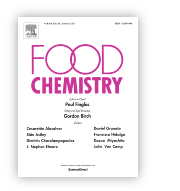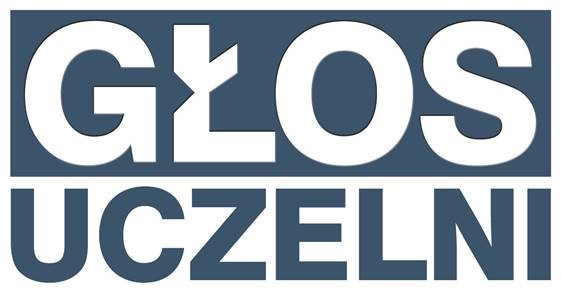
Research papers of the month – June 2022
We present the highest-score research papers of June 2022. These papers have ben published in journals with the highest Ministerial score – 200 points.
Thermo-oxidative stability of asymmetric distigmasterol-modified acylglycerols as novel derivatives of plant sterols
Magdalena Rudzińska, Anna Olejnik, A. Grygier, Katarzyna Kowalska, D. Kmiecik, Aleksandra Grudniewska, Anna Chojnacka, Witold Gładkowski, Gabriela Maciejewska, R. Przybylski
Food Chemistry
Ministerial score = 200.0
Journal Impact Factor (2020) = 7.514 (Q1)
 The study investigated the thermo-oxidative stability of distigmasterol-modified acylglycerols as a new struc- tured acylglycerols. Samples were heated at 60 and 180 ◦C for 8 h. Their percentage degradation and products formed during heating were compared with free stigmasterol and stigmasteryl esters. The remaining of stig- masterol and fatty acid parts, the formation of stigmasterol oxidation products and the composition of polar and non-polar fractions were analysed using chromatographic methods. The cytotoxicity and genotoxicity were determined with the use of an MTT test and a comet assay, respectively. The highest stability during heating was observed for 2,3-distigmasterylsuccinoyl-1-oleoyl-sn-glycerol (dStigS-OA) and the lowest for 2,3-dis- tigmasterylcarbonoyl-1-oleoyl-sn-glycerol (dStigC-OA). Data showed that the formation of thermo-oxidative degradation products is affected by the temperature and chemical structure of lipids present in the molecule. The dStigMAs bonded by a succinate linker and products formed during their thermo-oxidation showed no cytotoxic or genotoxic activity to normal human cells.
The study investigated the thermo-oxidative stability of distigmasterol-modified acylglycerols as a new struc- tured acylglycerols. Samples were heated at 60 and 180 ◦C for 8 h. Their percentage degradation and products formed during heating were compared with free stigmasterol and stigmasteryl esters. The remaining of stig- masterol and fatty acid parts, the formation of stigmasterol oxidation products and the composition of polar and non-polar fractions were analysed using chromatographic methods. The cytotoxicity and genotoxicity were determined with the use of an MTT test and a comet assay, respectively. The highest stability during heating was observed for 2,3-distigmasterylsuccinoyl-1-oleoyl-sn-glycerol (dStigS-OA) and the lowest for 2,3-dis- tigmasterylcarbonoyl-1-oleoyl-sn-glycerol (dStigC-OA). Data showed that the formation of thermo-oxidative degradation products is affected by the temperature and chemical structure of lipids present in the molecule. The dStigMAs bonded by a succinate linker and products formed during their thermo-oxidation showed no cytotoxic or genotoxic activity to normal human cells.
DOI:10.1016/j.foodchem.2022.133150
Lift Energy Storage Technology: A solution for decentralized urban energy storage
Julian David Hunt, Andreas Nascimento, Behnam Zakeri, Jakub Jurasz, Paweł Dąbek, Paulo Sergio Franco Barbosa, Roberto Brandão, Nivalde Joséde Castro, Walter Leal Filho, Keywan Riahi
Energy
Ministerial score = 200.0
Journal Impact Factor (2020) = 7.147 (Q1)
 The world is undergoing a rapid energy transformation dominated by growing capacities of renewable energy sources, such as wind and solar power. The intrinsic variable nature of such renewable energy sources calls for affordable energy storage solutions. This paper proposes using lifts and empty apartments in tall buildings to store energy. Lift Energy Storage Technology (LEST) is a gravitational-based storage solution. Energy is stored by lifting wet sand containers or other high-density materials, transported remotely in and out of the lift with autonomous trailer devices. The system requires empty spaces on the top and bottom of the building. An existing lift can be used to transport the containers from the lower apartments to the upper apartments to store energy and from the upper apartments to the lower apartments to generate electricity. The installed storage capacity cost is estimated at 21 to 128 USD/kWh, depending on the height of the building. LEST is particularly interesting for providing decentralized ancillary and energy storage services with daily to weekly energy storage cycles. The global potential for the technology is focused on large cities with high-rise buildings and is estimated to be around 30 to 300 GWh.
The world is undergoing a rapid energy transformation dominated by growing capacities of renewable energy sources, such as wind and solar power. The intrinsic variable nature of such renewable energy sources calls for affordable energy storage solutions. This paper proposes using lifts and empty apartments in tall buildings to store energy. Lift Energy Storage Technology (LEST) is a gravitational-based storage solution. Energy is stored by lifting wet sand containers or other high-density materials, transported remotely in and out of the lift with autonomous trailer devices. The system requires empty spaces on the top and bottom of the building. An existing lift can be used to transport the containers from the lower apartments to the upper apartments to store energy and from the upper apartments to the lower apartments to generate electricity. The installed storage capacity cost is estimated at 21 to 128 USD/kWh, depending on the height of the building. LEST is particularly interesting for providing decentralized ancillary and energy storage services with daily to weekly energy storage cycles. The global potential for the technology is focused on large cities with high-rise buildings and is estimated to be around 30 to 300 GWh.
DOI:10.1016/j.energy.2022.124102










